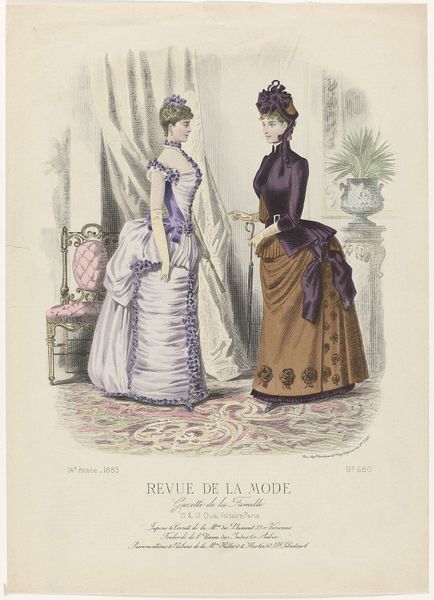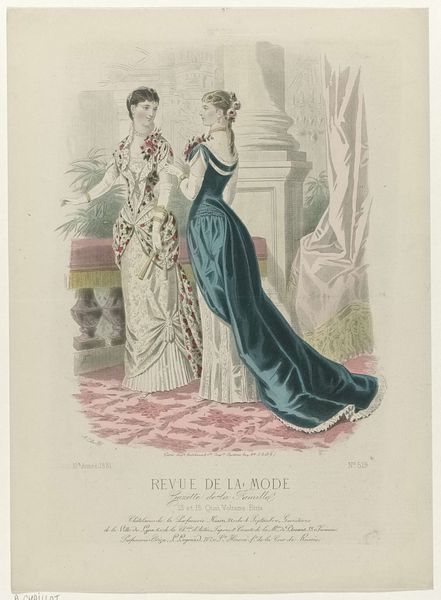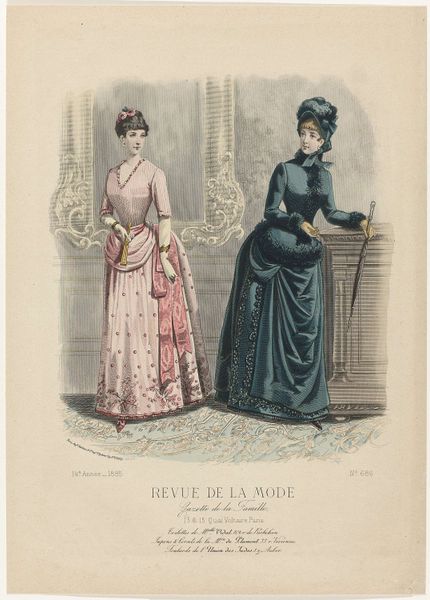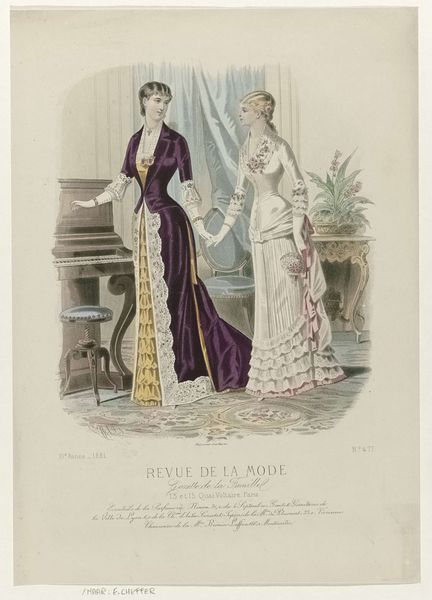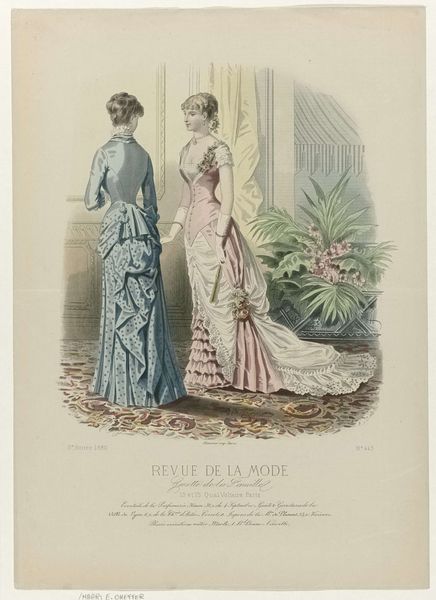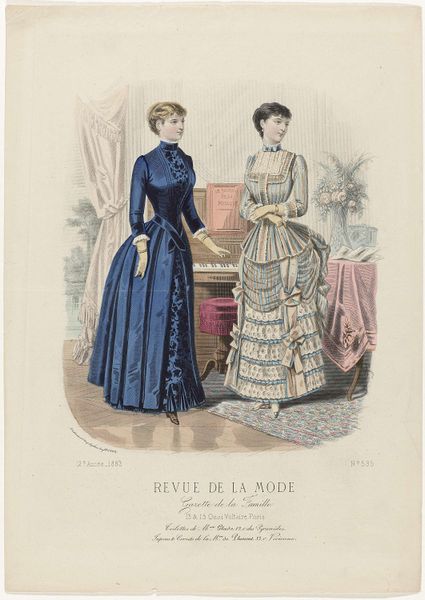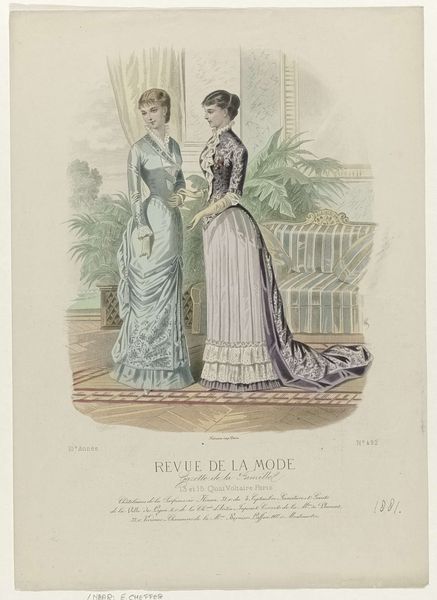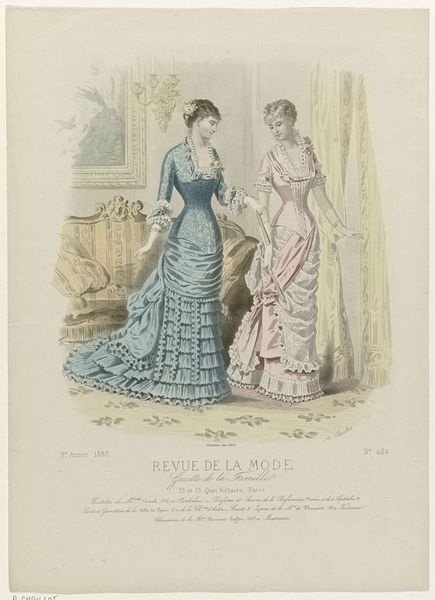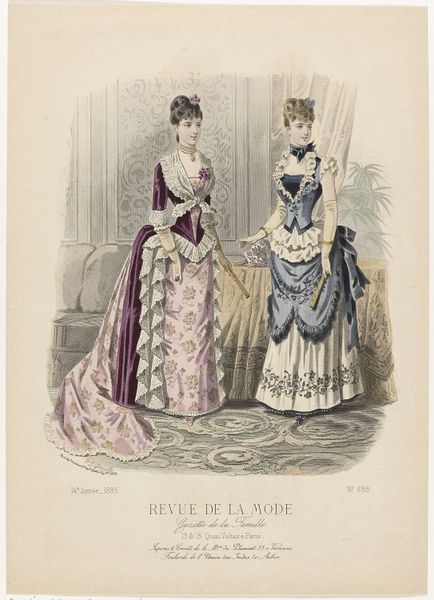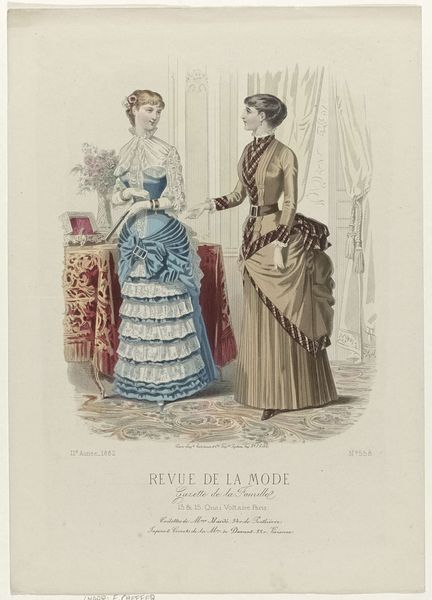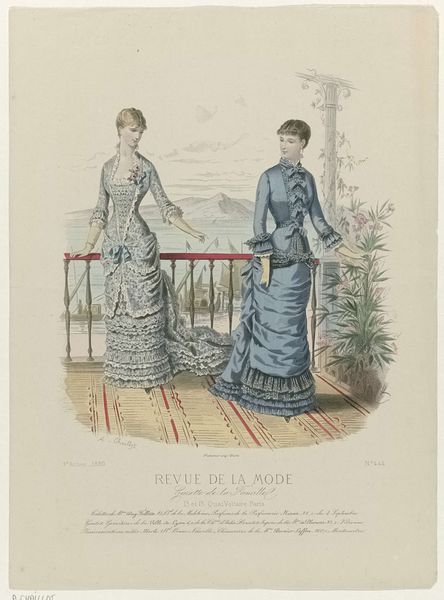
Revue de la Mode, Gazette de la Famille, dimanche 9 juillet 1882, 11e année, No. 549: Toilettes de Mme Durand (...) 1882
0:00
0:00
Dimensions: height 375 mm, width 270 mm
Copyright: Rijks Museum: Open Domain
This fashion plate, a lithograph from the “Revue de la Mode” in 1882, presents two elegant women adorned in the height of Parisian fashion. Notice the careful attention to detail in their garments: bows, ruffles, and delicate floral arrangements. The recurring motif of flowers, prominently displayed on the bodice of one dress and as hair ornaments, is a potent symbol. In classical antiquity, flowers were emblematic of Flora, the Roman goddess of springtime and fertility. Yet, beyond mere aesthetic appeal, flowers also represented the ephemeral nature of beauty, a poignant reminder of mortality. Throughout history, we see flowers imbued with shifting meanings—from the Renaissance allegories of Botticelli’s "Primavera," where they celebrate rebirth, to the Victorian era's language of flowers, where specific blooms conveyed secret sentiments. Here, in this late 19th-century context, flowers suggest a delicate balance between the celebration of beauty and an unspoken awareness of its fleeting nature. The presence of floral symbolism acts as a powerful force, engaging viewers on a deep, subconscious level. It is a testament to how cultural memory and the subconscious can influence the production and interpretation of a motif, underscoring the complex ways visual symbols evolve and resurface across different times and places.
Comments
No comments
Be the first to comment and join the conversation on the ultimate creative platform.

